Dr.
Jayant Baliga

|
|
Methods of
forming silicon carbide semiconductor devices having buried silicon
carbide conduction barrier layers therein
U.S.
Patent Number 5,950,076
|
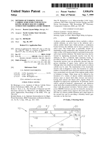
Dr. Baliga is one
of the most prolific inventors on campus. This patent, Dr. Baliga's
100th, was granted to him in 1999.
|
|
Gate
Enhanced Rectifier
U.S.
Patent Number 4,969,028
|
Click
on the image to read more about the Gate Enhanced Rectifier Patent.
|
|
|
| |
|
Power
semiconductor devices having improved high frequency switching and
breakdown characteristics
|
|
|
U.S.
Patent Number 5,998,833
|
| |
|
These
charts depict some of the every day applications of Dr. Baliga's
IGBT and Power MOSFET patents. They are used in a wide variety of
items from the more complex factory robot used to assemble cars
down to ordinary home appliances. An important application of the
IGBT is its use in defibrillators, which save up to 100,000 lives
per year.
|
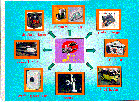
|

|
|
Dr.
Donald Bitzer
|
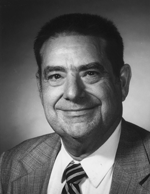 |
|
Dr.
Donald Bitzer, Distinguished University Research Professor
in Computer Science, holds a number of patents which
include a plasma display panel, a high-quality modem
and the first system to combine graphics and touch-sensitive
screens, known as PLATO.
|
|
|
Method and
apparatus for addressing and sustaining gas discharge panels
U.S. Patent Number 4,100,535
Click
on the image to read information on one of Bitzer's patent. 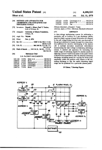
|
|
Dr.
Ruben G. Carbonel
l
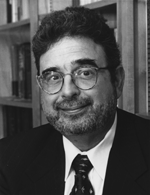
|
A letter dated March
18, 1996 from W. Mark Crowell, Asst. Vice Chancellor, Dir. Of
Technology Administration and Development to D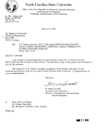 r.
Ruben Carbonell ac
knowledging
receipt of his patent for immunodiagnostic assay using liposomes
carrying l
abels
thereof on outer liposome surface. r.
Ruben Carbonell ac
knowledging
receipt of his patent for immunodiagnostic assay using liposomes
carrying l
abels
thereof on outer liposome surface.
|
|
Immunodiagnostic
Assay Using Liposomes Carrying
Labels
Thereof On Outer Liposome Surface
U.S. Patent Number 5, 494, 803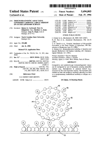
|
|
Dr.
Robert F. Davis
|
|
|
|
Dr. Robert F. Davis
has developed several patents in relation to his field of Ceramic
Engineering. Most recently on April 18, 2000 he received a patent
for his work:
Gallium nitride
semiconductor structures including a lateral gallium nitride layer
that extends from an underlying gallium nitride layer
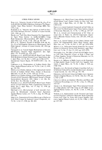 
U.S.
Patent No. 6,051,849
|
|
These background
research materials and reports led to Dr. Davis' pa tent
High surface area molybdenum nitride electrodes
U.S.
Patent No. 5,935,648, for use in high energy density energy
storage devices. tent
High surface area molybdenum nitride electrodes
U.S.
Patent No. 5,935,648, for use in high energy density energy
storage devices.
High Surface
Area Molybdenum Nitride Electrodes
Patent
Number 5,935,648
 
|
Dr. Jagd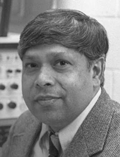 ish
Narayan ish
Narayan
Professor Jagdish "Jay"
Narayan co-authored a research paper entitled "Titanium Nitride on Gallium
Arsenide Epitaxial Heterostructures" with two other North Carolina State
University researchers, Professor Jagannadham Kasichainula, and graduate
student Tzvetlanka Jeleva. The paper, which won first prize in a national
competition of the Electron Microscopy Society of America (EMSA), dealt
with the development of futuristic materials structures for advanced
microelectronic devices. The structures are fabricated by a thin-film
growth mechanism called domain epitaxy, invented and patented in 1994
by Narayan, who holds additional patents.
Narayan has received many
honors for his pioneering research in laser and plasma processing of
materials, atomic-scale characterization and modeling of defects and
interfaces, high-temperature superconductors, diamond and diamond-like
materials, thin films and super-hard materials. In 1999 the Minerals,
Metals and Materials Society (TMS) named him a TMS Fellow and life member,
which is the society's highest honor. In the same year, Narayan received
the prestigious ASM Gold Medal from the American Society for Metals
(ASM) International.
To read about a few of
Narayan's honors, view the images below:
|
|
|
|
Narayan
receives Distinguished Alumnus Award
|
Narayan
receives the ASM Gold Medal
|
 To
view an article published by J. Narayan, S.C. Jain, M. Willander, and
R. VanOverstraeten in the Journal of Applied Physics in Febrary
2000 Issue, Volume 87, Number 3, entitled "III-nitrides: Growth,
characterization, and properties," click on the journal icon: To
view an article published by J. Narayan, S.C. Jain, M. Willander, and
R. VanOverstraeten in the Journal of Applied Physics in Febrary
2000 Issue, Volume 87, Number 3, entitled "III-nitrides: Growth,
characterization, and properties," click on the journal icon:
|
Dr.
Hayne Palmour
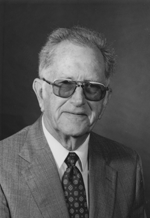
An
Alumni and Professor Emeritus at NC State University, Hayne Palmour
has recieved six patents for his work in Ceramic Engineering.
In 1981 he received a patent for Olivine refractory bricks for
heat storage applications. The bricks have thermal and physical
properties suitable for use as a thermal energy storage unit in
an electric thermal storage furnace and are characterized by having
excellent thermal shock properties and resistance to spalling.
|
|
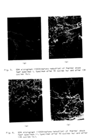 Click
on this image to see thermal shock test specimen in greater detail.
Click
on this image to see thermal shock test specimen in greater detail.
|
| |
|
|
|
These
photographs illustrate another of Palmour's patents, Process for
sintering finely divided particulates and resulting ceramic products
U.S. Patent No. 3,900,542.
|
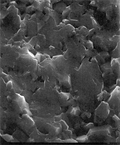 |
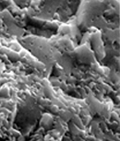 |
|

